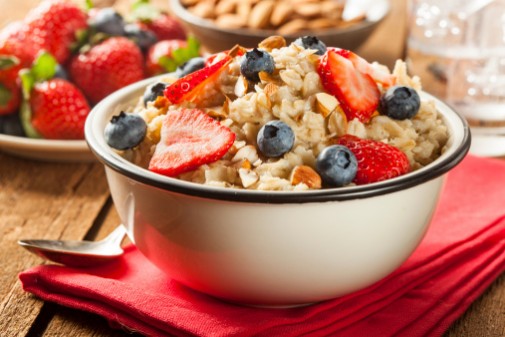How to choose a healthy breakfast

Researchers say it’s time folks take the blinders off and face the cold-hard facts about sugar consumption and its impact on their health.
An alarming study published in the journal PLoS draws a strong link between higher diabetes rates and sugar. Many experts are calling the data a “smoking gun,” equivalent to the 1960s study that linked cigarettes to lung cancer.
In an online statement, one of the study’s lead authors said, “You couldn’t enact a real-world study that would be more conclusive than this one.”
Among the key findings, was that for every 12 ounces of a sugar-sweetened beverage a person consumes per day, the rate of diabetes goes up 1 percent.
Research also shows that Americans are eating large amounts of sugar during breakfast. Take sugary cereals. Last year alone, nearly 400 new cereals hit the market. And the nutritional differences among the brands are so vast, that it can leave even the savviest shoppers scratching their heads.
One expert said while some cereals live up to their healthy claims, others are more like scarfing down a giant-sized candy bar.
Dating back to the 1800s, cereals have been an American household staple for decades, and there’s no sign that’s going to change. So what do you look for when staring down the massive cereal aisle at your local grocery story? How do you pick the healthiest box of cereal to bring home?
New healthy cereal bonuses
Taking a closer look at the new cereals hitting the market, there are plenty of healthy goodies to look for. Today, you can find everything from quinoa and spelt to amaranth and brown rice in cereal. Registered dietitian Barbara Melendi, who practices at Advocate Illinois Masonic Medical Center on Chicago’s North Side, says making sure your cereal has plenty of whole grains is a good way to start.
“Oatmeal is naturally 100 percent whole grain, so it’s a great breakfast choice,” Melendi says. “The easiest way to determine if your cereal is a good source of whole grains is to turn the box over and check out the ingredients listing—the words “whole grain” should be at the top of the list.”
In fact, research shows that consuming 48 grams of whole grains daily could lower your risk of diabetes by 25 percent. It can also reduce your risk of cancer by up to 40 percent and your heart disease risk by a third. And according to the Academy of Nutrition and Dietetics, eating the recommended daily amount of whole grains can help you maintain your weight, too.
Healthy cereal options for ladies
Melendi says women can look for fiber-rich cereal, which helps them feel full longer and eat less. One U. S. Department of Agriculture study found that women who doubled their daily intake of fiber from 12 to 24 grams took in 90 fewer calories a day. Also, if you are watching your weight, Melendi recommends picking a cereal that has less than 150 calories per serving. She also suggests adding a lean protein such as low-fat yogurt or a boiled egg to round out your breakfast.
Women can also benefit from folic acid found in cereals that are good for their heart and maintaining a healthy pregnancy. For women with refined palates, there are cereals packed with flax seed and chia. But Melendi says don’t be fooled by fancy names highlighted on the front of the box – many times these distract from other undesirable ingredients that lurk inside. “It is important to look past the front-of-box health claims and make sure your cereal choice is based on the ingredient label listing on the back,” she said.
Shopping for the kids
When picking cereal for your little ones, Melendi says parents can look for cereals that add vitamins and minerals like iron (for energy) and magnesium (for your heart and bones). Also, about a third of new cereals have added omega-3s, which are also good for your ticker. But she cautions that often less healthier cereals are displayed on the lower shelves, right at the eye level where kids easily see them. So she recommends for moms and dads to start their search for healthier options up high!
Healthier sweetening options
Try sweetening your cereal with fruits and berries and maybe a sprinkle of cinnamon, Melendi said. Some brands are also sweetening cereal in fancier ways—with options like 100 percent pure maple syrup and honey. These less refined sugar options do have an advantage over processed options because some research has shown they can be beneficial in fighting cancer and heart disease.
“Keep in mind that gram for gram, these sweet options sport the same number of calories as white sugar, but their more intense flavors may allow you to use less to sweeten your cereal,” she said.
Finally, Melendi says choosing the right milk can also help you cut back on calories and sugar, and offer some health benefits too.
“I suggest sticking with unflavored, nonfat or one percent milk for an equal amount of protein and calcium,” she said. “There are some versions with more fat that can add to your waistline.”
Related Posts
Comments
2 Comments
About the Author

health enews staff is a group of experienced writers from our Advocate Health Care and Aurora Health Care sites, which also includes freelance or intern writers.

















I recently switched my usual bowl of sugary cereal for oatmeal in the morning. It keeps me much fuller and still tastes great. Thanks for the helpful info, I’m glad I changed my breakfast after reading this!
I love including fruit in my cereal — cold or hot!